September 5, 2024, 7:18 am | Read time: 7 minutes
Morocco, and especially the enchanting royal city of Marrakech, are a destination of longing for many. TRAVELBOOK author Angelika Pickardt was there and reveals what visitors can expect in Marrakech and what not to miss.
As my plane touched down at Marrakech airport near the city center and I stepped into the warm air, I was instantly whisked back 20 years in time. That’s how long it’s been since my last sojourn in Morocco, yet the scents in the air are as familiar as if it were yesterday. What is that scent? It’s a challenge to pinpoint, a unique blend that’s simply different. Perhaps it’s the spices wafting over from the old town, the Medina, with its lively souk, coupled with the grilled aromas of the food stalls on the famous Djemaa el Fna and the smells of the city’s tanners, dyers, and leather workers. This aromatic tapestry is undoubtedly more potent within the Medina itself, yet a hint of it lingers even here at the airport.
What strikes me immediately on the drive to the hotel is that Marrakech has expanded considerably outside the historic center – and still is expanding. Construction cranes tower up into the sky everywhere, half-finished building complexes stand next to modern, finished residential buildings. We drive past shopping malls, hotels, and nightclubs.
The Medina of Marrakech
However, the Medina is the clear highlight and heart of the royal city. Surrounded by a 19-kilometer (11.8 mile)-long city wall with a total of 20 magnificent gates, it is home to residential areas with winding alleyways and numerous architecturally significant buildings such as the Koutoubia Mosque and the Kasbah from the 12th century.
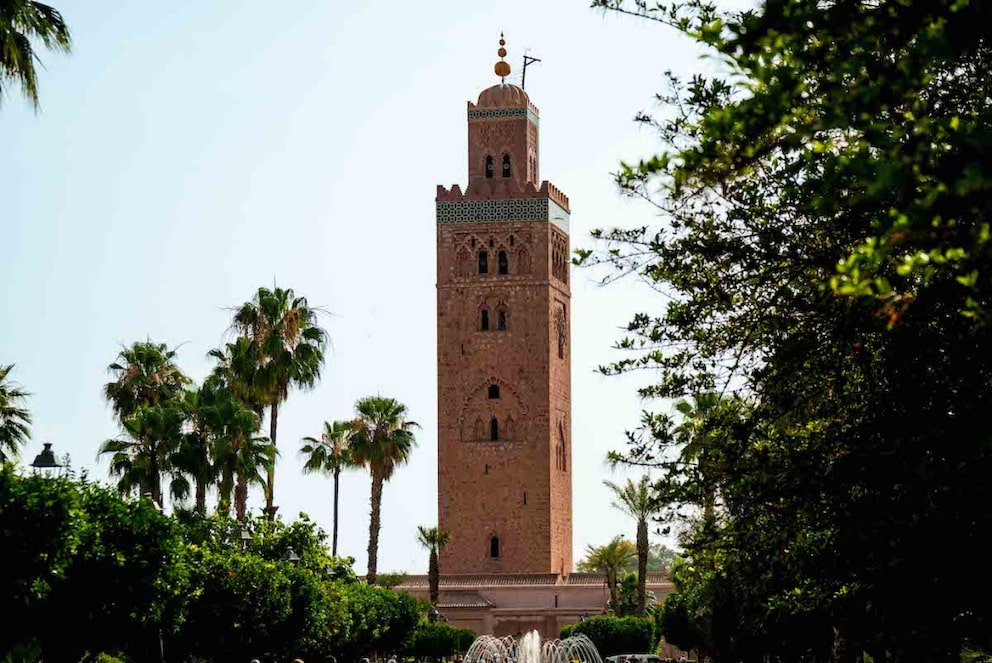
In the souks, the narrow, partly covered market alleys, traders offer spices, colorful cloths, lamps, jewelry, and leather goods for sale. The souks are a world of their own, full of intense smells, colors, and sounds. Some goods are still made by hand here and visitors can watch the craftsmen, tanners, and artists at work. Engaging in the time-honored dance of haggling overprices is an integral part of the experience. According to the locals, you should first offer half of the price the trader quotes. Then you name reciprocal sums and come closer. In the end, however, you should strike at the price you are really prepared to pay and still remain fair.
Tip: Try to take a look at one of the stately riads in Marrakech. These are traditional Moroccan residences with an inner courtyard. Many of them have been converted into luxurious hotels in recent years. Originally, the design was intended to offer the family protection and privacy.
Djemaa el Fna – central square with a dark side
Another gem within the Medina is undoubtedly the Djemaa el Fna, the famous jesters square, brimming with cook shops, snake charmers, musicians, and artists that transform it into an enthralling spectacle as night falls. This place has always been a meeting place for locals and travelers alike. Due to its uniqueness, the square has been on the UNESCO list of “Masterpieces of the Oral and Intangible Heritage of Humanity” since 2001.
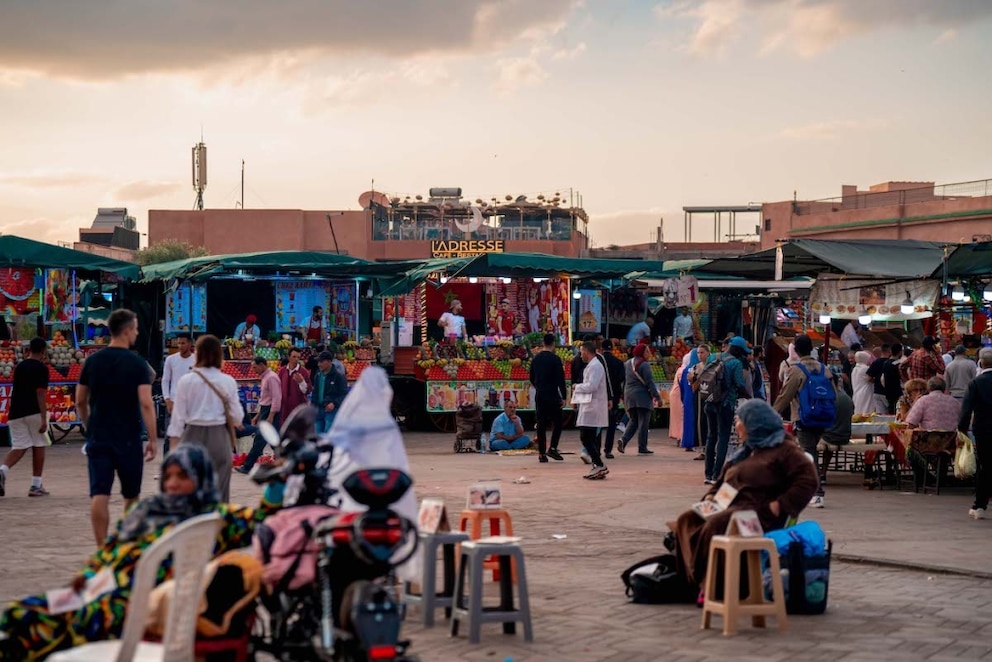
For animal lovers like me, however, the sight of monkeys and birds in chains and snakes with their teeth removed is almost unbearable. As a visitor, you should ask yourself whether it is really necessary to be photographed with an animal that is sometimes kept in the blazing sun under these conditions.
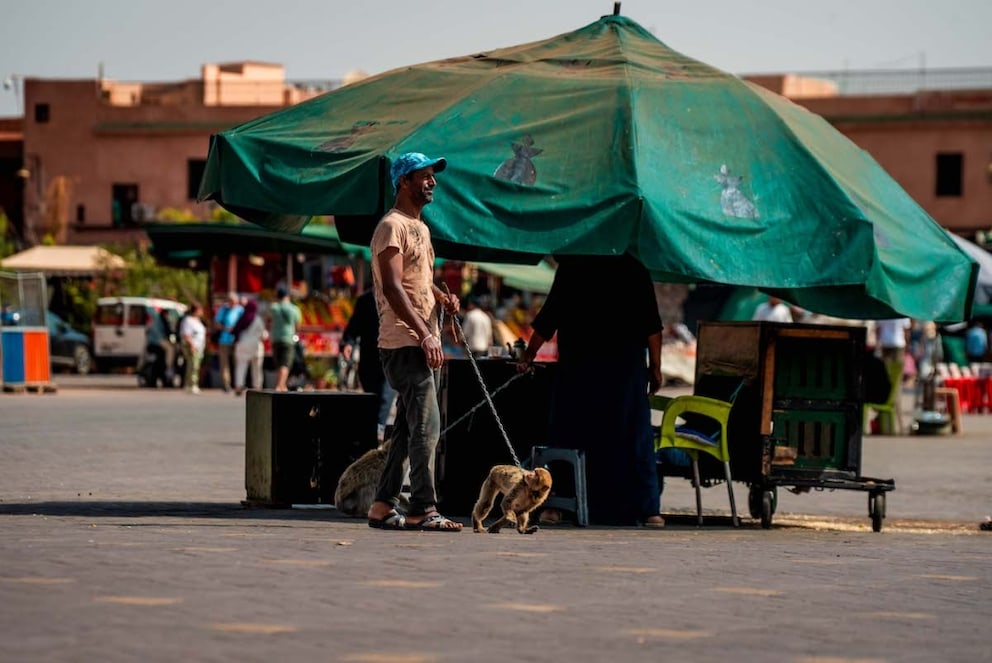
The sight of the numerous horse-drawn carriages standing in a long line at the exit of Djemaa el Fna also hurts me personally. The animals are afforded no respite from the sun and no opportunity to recline and rest. Some even have their legs bound together. And yet tourists allow themselves to be carted through the chaotic traffic of Marrakech in the summer heat by these highly sensitive animals.
Of course, I am aware that the animal business provides many locals with a livelihood. Nevertheless, it would be more than desirable if the city paid more attention to the welfare of these animals. In the case of the horse-drawn carriages, for example, the adjacent small park with its trees could serve as a shady place for the horses, or a covered shelter could be created.
What to see and do outside the Medina
Jardin Majorelle
If you want to escape the hustle and bustle of the medina and long for some peace and nature, there are several options in Marrakech. One of these is a visit to the Jardin Majorelle, a 9000 square meter (10,764 square yard) oasis. This was designed by the French painter Jacques Majorelle in 1922. In 1931, he commissioned the French architect Paul Sinoir to build a painter’s studio in the Art Deco style. He painted it in the color that is still known today as “bleu Majorelle”. Around the studio, he created a living work of art from exotic plants. These plants were brought back from his many travels.
After Majorelle’s death in 1962, the garden was left to its own devices and gradually deteriorated. In 1980, the fashion designer Yves Saint Laurent and his partner Pierre Bergé bought the garden. They did this to save it from the construction of a hotel complex. Since then, the Jardin Majorelle has been extensively restored. The painter’s studio now houses a museum dedicated to Berber culture.
The garden welcomes visitors from 8 am to 6:30 pm. You can secure your entry online for 165 dirhams (about 15 euros) (16 dollars), from a range of visiting times.
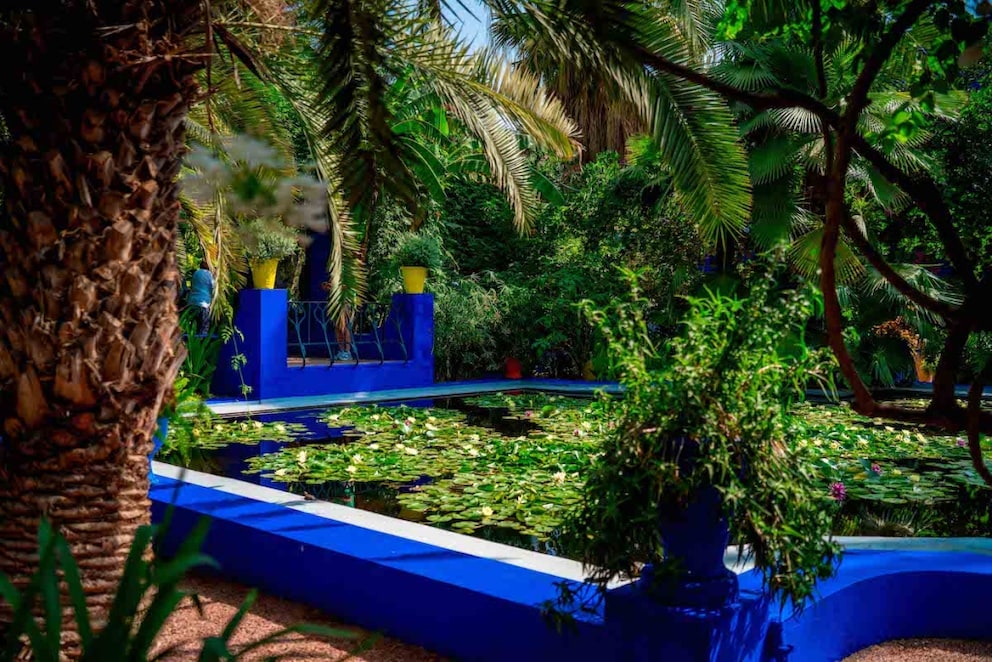
Musée Yves Saint Laurent
Directly adjacent to the Jardin Majorelle is the Musée Yves Saint Laurent, which is dedicated to the life and work of the French fashion designer and his special connection to Marrakech. The museum complex, which opened in 2017, exhibits 50 of Saint Laurent’s clothes, as well as an auditorium with 150 seats, a library, a boutique, and a café. Yet, it’s not just fashion aficionados who will find their visit rewarding; the building’s spectacular architecture alone, spanning 4,000 square meters (4,784 square yards), is a sight to behold.
Open Tuesday to Sunday between 11 am and 6 pm. Tickets for the Jardin Majorelle are also valid for the Musée Yves Saint Laurent.

This is how you can discover Paris in only 2 days

Guadeloupe: The Most Beautiful Destinations and Best Tips

My 7 Favorite Places in Bordeaux
Things to do outside Marrakech
Hot air balloon ride at sunrise
Soaring in a hot air balloon offers an unparalleled experience. From Marrakech, there are various providers who collect participants at dawn and take them to the hot air balloon launch site outside the city. There you can watch as dozens of balloons are inflated before taking to the skies yourself. From there, you can watch the sun rise over the Atlas Mountains. The sight of the many colorful balloons and the silence as you float through the air is unique. During my visit to Marrakech, the balloon ride was my personal highlight.
Afterward, a typical Berber breakfast of cornbread, pancakes, olives, fresh fruit, and sweet mint tea is served in tents.
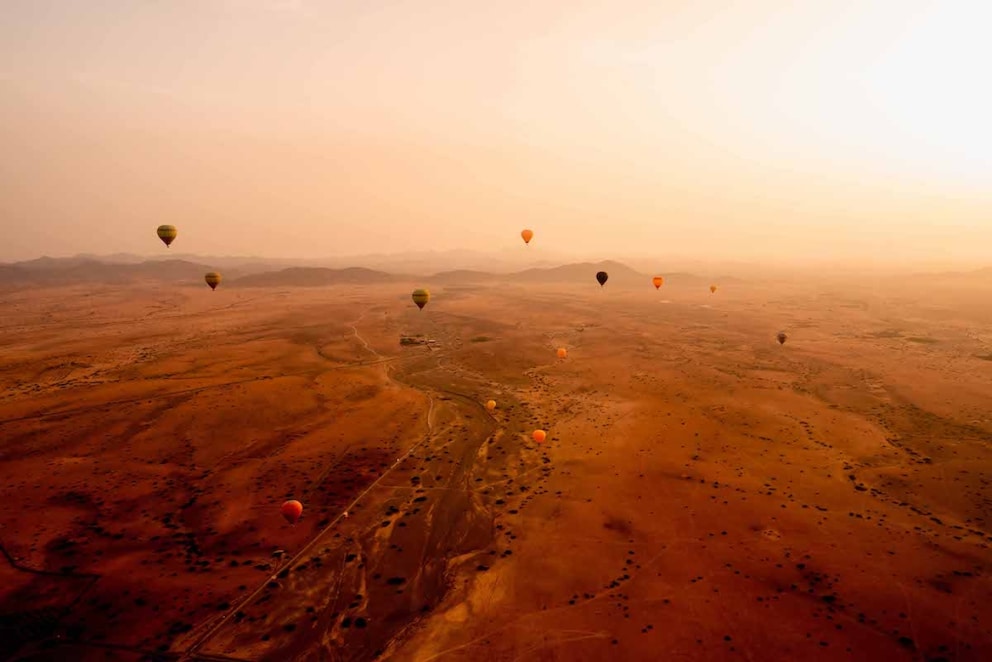
Anima Art Garden
South of the city, visitors to Marrakech can discover a botanical and artistic haven in the Anima Garden. This was the brainchild of Austrian artist André Heller. As you stroll along the shady paths past exotic plants, you will discover colorful works of art everywhere, including works by Pablo Picasso and Keith Haring. There is also a museum, a small store and a café with a roof terrace overlooking the garden.
Free shuttle buses run from Marrakech to the Anima Garden. Admission costs 140 dirhams, the equivalent of around 14 euros (15.50 dollars).

Quad tour in the Agafay desert
If you like action, you can book a guided tour from Marrakech to the Agafay Desert, where you can go on a quad bike tour during sunset. Afterward, a typical Moroccan dinner with live music is served in a cozy Berber tent.
This trip to Morocco took place in June 2024 in cooperation with the German Travel Association (DRV) and Visit Morocco. Our standards of transparency and journalistic independence can be found at www.axelspringer.de/unabhaengigkeit

